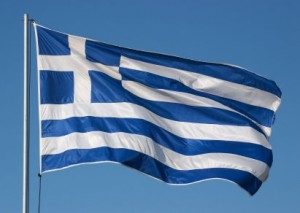
Though the rate of growth of the world fleet has slowed over the past seven years it is still considerable, and is often the case when something to do with shipping is in expansion mode, Greek shipowners are among the drivers.
Rate of growth of the global fleet has slowed over the last seven years, from a peak of 8.6% in 2010 to 3.1% in 2016. Still, the overall fleet capacity has increased 391m gt more than the 355m gt added in the previous decade.
Led by Greek interests, growth has been driven by owners from 10 nations that are responsible for 75% of all of the growth, but some smaller players are also in the mix.
A report by Clarkson Research Services reveals Greek owners have been responsible for the largest volume of fleet growth since the start of 2010, with 89.3m gt entering the Greek-owned fleet in this period, cementing their position as the largest owner nation, having overtaken the Japanese in 2013.
The Greek growth is the result of a sustained level of deliveries and secondhand purchases in recent years, much of the buying involving previously owned Japanese tonnage.
The Chinese owned fleet has grown by the second largest total since 2010 (73.7m gt), whilst the Japanese fleet has increased 32.2m gt.
Of the 10 national fleets to have grown most in tonnage since the start of 2010, nine are amongst the largest owner nations as of 1 May.
Only Canadian owners are not part of the 10, ranking 13th with 24.5m gt, highlighting recent growth has been driven by countries with established fleets.
The exception to this trend are German owners, who own the fourth largest fleet with 85.4m gt, but have experienced a 12% reduction in tonnage since 2013. A telling statistic on the state of the German shipowning sector.
The global fleet has increased 44% in gt terms in the seven years, with all regions seeing a sustained level of growth. The European and Asia/Pacific fleets have grown almost equally, 164m gt and 168m gt respectively.
However, there have been some notable differences in the diversity of this growth. European growth has been primarily driven by Greek owners, whose fleet has grown 74% in gt terms since 2010, equivalent to 54% of European growth. By comparison, Norwegian and Italian growth has only accounted for 9% and 7% of European growth respectively.
In contrast, Asian fleet growth has been driven by a wider set of nations. Whilst Chinese owners account for 44% of total Asia/Pacific fleet growth in gt terms, owners in Japan (19% share of growth), Singapore (10%), South Korea (9%) and Taiwan (6%) have experienced notable fleet growth since 2010.
Outside the largest owner countries, there have also been some notable developments amongst smaller owner nations. The Omani owned fleet has increased 257% in tonnage terms since 2010, whilst the Swiss, Bermudan and Kuwaiti fleets have all more than doubled in size. With total fleet growth slowing, some of these smaller owner nations are becoming more influential in regional and global growth patterns.
Copyright Ships & Ports Ltd. Permission to use quotations from this article is granted subject to appropriate credit given to www.shipsandports.com.ng as the source.
